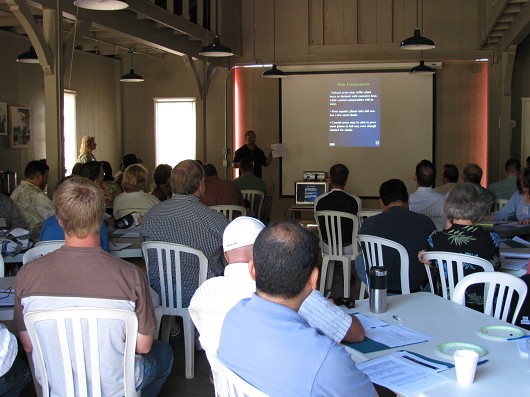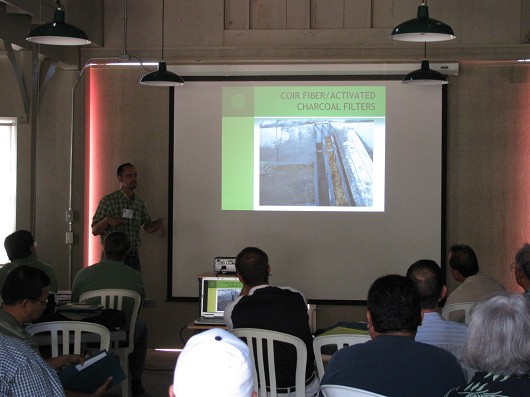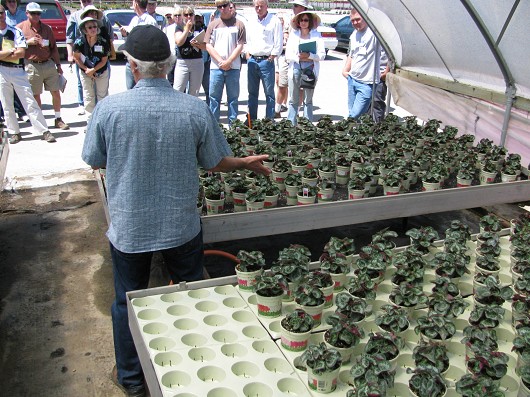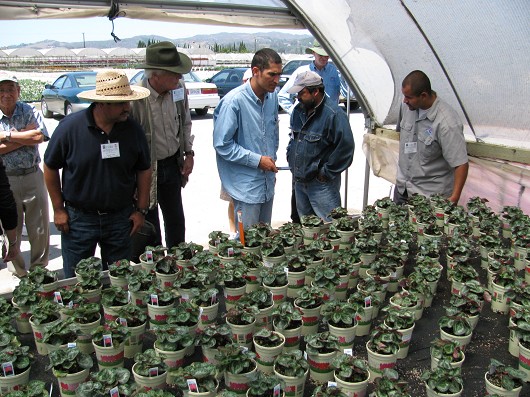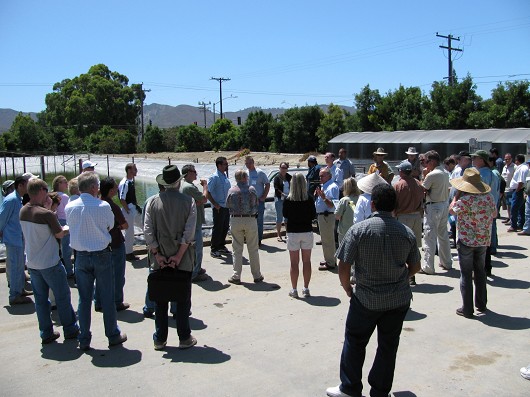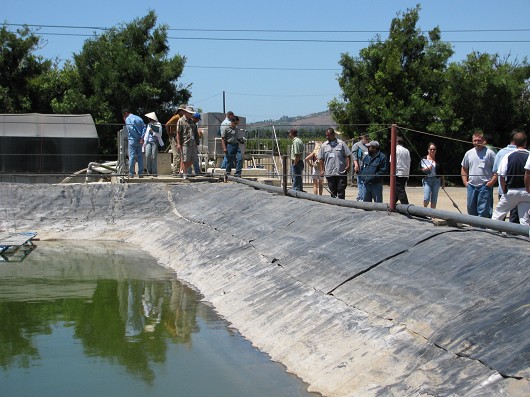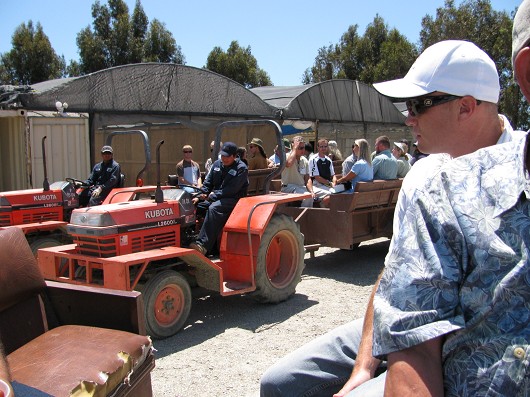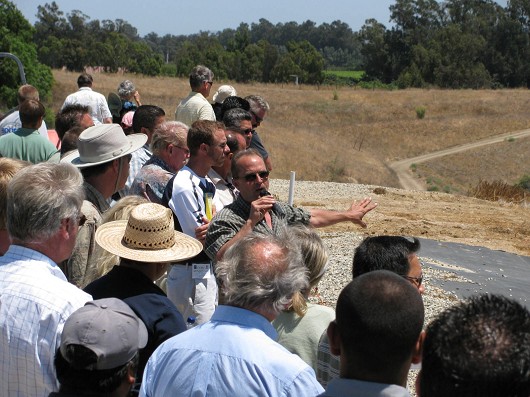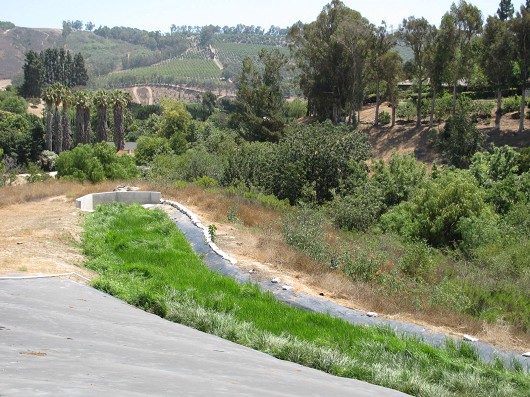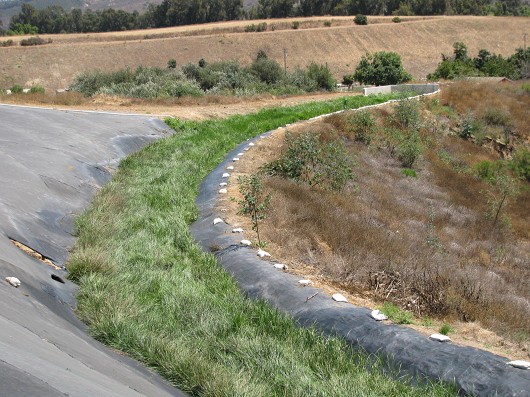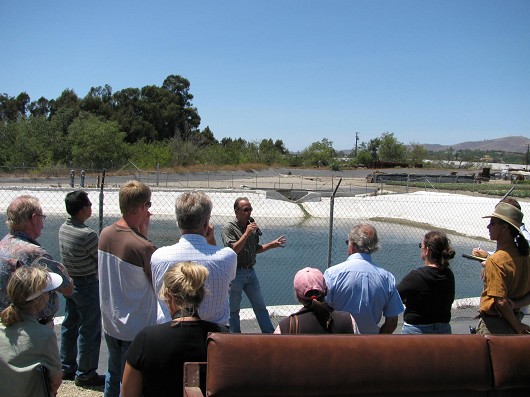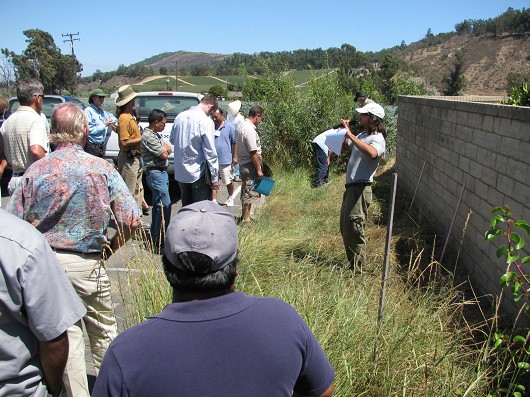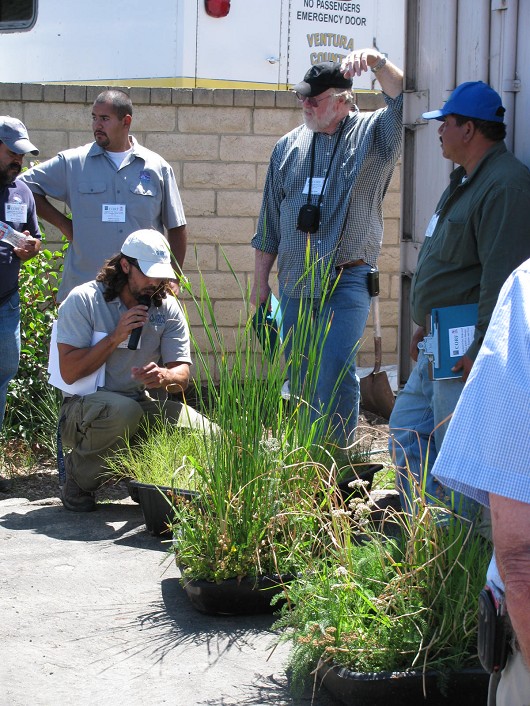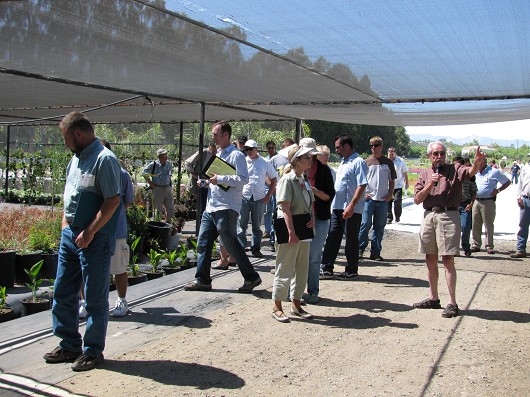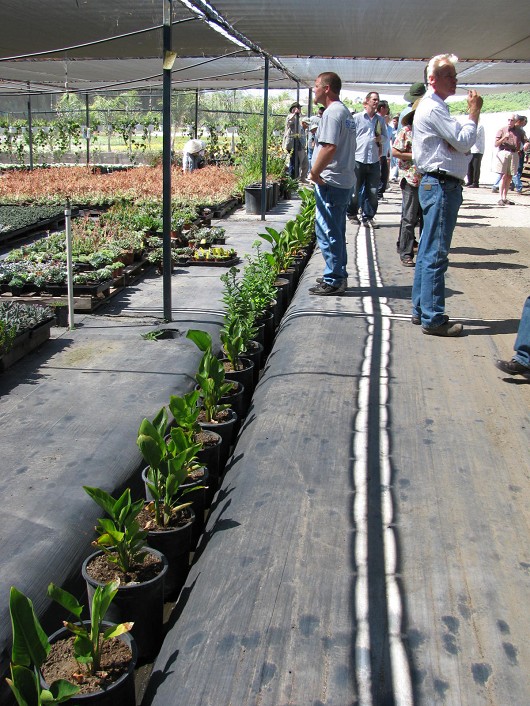August 6, 2009 Vegetated Filter Strips to Manage Runoff- Santa Paula
Vegetated Filter Strips and Other BMPs to Manage Runoff: Seminar and Tour- Santa Paula
Vegetated filter strips, buffers, grassed waterways, vegetated swales, and constructed wetlands are examples of vegetated areas that can be used to economically manage pollutants and other environmental problems for sustainable agricultural production. Furthermore, nursery growers have successfully utilized harvested plants in filter strips as saleable crops, thus offsetting the cost of establishing and maintaining these systems.
Speaker presentations will provide participants with information on the design, construction, and maintenance of vegetated treatment systems for managing irrigation and storm runoff, along with an opportunity to see examples in commercial nurseries on a tour in private vehicles.
Various types of plant material that can be used in vegetated treatment systems will be demonstrated. In addition, the use of capillary mats as filter strips will be demonstrated.
A map and driving directions for the tour sites will be emailed with registration confirmation.
Continuing Education Units applied for: CDPR “other” and CCN Pro. Conditional Waiver credit has been approved for this meeting from the Central Coast and Los Angeles Regional Water Quality Control Boards.
Thursday, August 6, 2009
Hansen Agricultural Center
14292 West Telegraph Road
Santa Paula
8:30 am - 3:30 pm
|
Time |
Topic |
Speaker(s) |
|
8:30 - 9:00 am |
Registration |
|
|
9:00 - 9:20 am
|
Introduction: Overview of Vegetated Treatment Options and Benefits |
Julie Newman, Farm Advisor, Ventura County |
|
9:20 - 9:40 am
|
Site Selection and Design Case Study: Grassed Waterway at Commercial Nursery |
Lou Negy PE and Heather O'Connell PE, Civil Engineers, Water Resource Engineering Assoc |
|
9:40 - 10:30 am
|
Plant Selection Use of Native Plants and Ornamentals (Regulatory Aspects and Considerations Regarding Invasiveness, Examples of Natives and Ornamentals |
Don Merhaut PhD, Extension Specialist, Botany & Plant Sciences, UCR Noreen Murano, Wildscape Restoration Casey Burns, NRCS |
|
10:30 - 11:10 am
|
Case Study: Canna Filter Strip as a Commercial Crop/Planting and Maintenance of Vegetated Systems |
Darren Haver PhD, Water Resources/Water Quality AdvisorUCCE Orange County |
|
11:10 - 11:45 am
|
Break/ Load Bus, Pick up Box Lunches and Snack/Transit/Unload |
|
|
11:45 am - 12:15 pm
|
DoRight’s, 14545 W. Telegraph Rd.: Host: Dudley Davis Demonstration: Capillary Mats as Un-vegetated Filter Strips |
Richard Evans, Extension Specialist, Dept. of Plant Sciences, UC Davis |
|
12:15 - 1:00 pm
|
Load Bus/Transit/Unload |
|
|
1:00 - 1:30 pm
|
Lunch Bordiers, Somis |
Gene Arthur: Bordiers’ Water Quality Management Program |
|
1:30 - 2:10 pm
|
Tour Bordiers (Background, Grassed Water Way, Constructed Wetlands) Host: Gene Arthur, Manager |
|
|
2:10 - 2:25 pm |
Load Bus/Transit/Unload |
|
|
2:25 - 2:40 pm |
NRCS/Ventura Co. RCD Vegetated Bioswale and Native Plants |
Casey Burns, NRCS |
|
2:40 - 2:55 pm |
Load Bus/Transit/Unload |
|
|
2:55 - 3:30 pm
|
Tour Plants Plus (Plant Filter Strips as Commercial Crops): Host José Aceves |
|
|
3:30 - 4:00 pm |
Load Bus/ Return to Hansen Ag Center |



